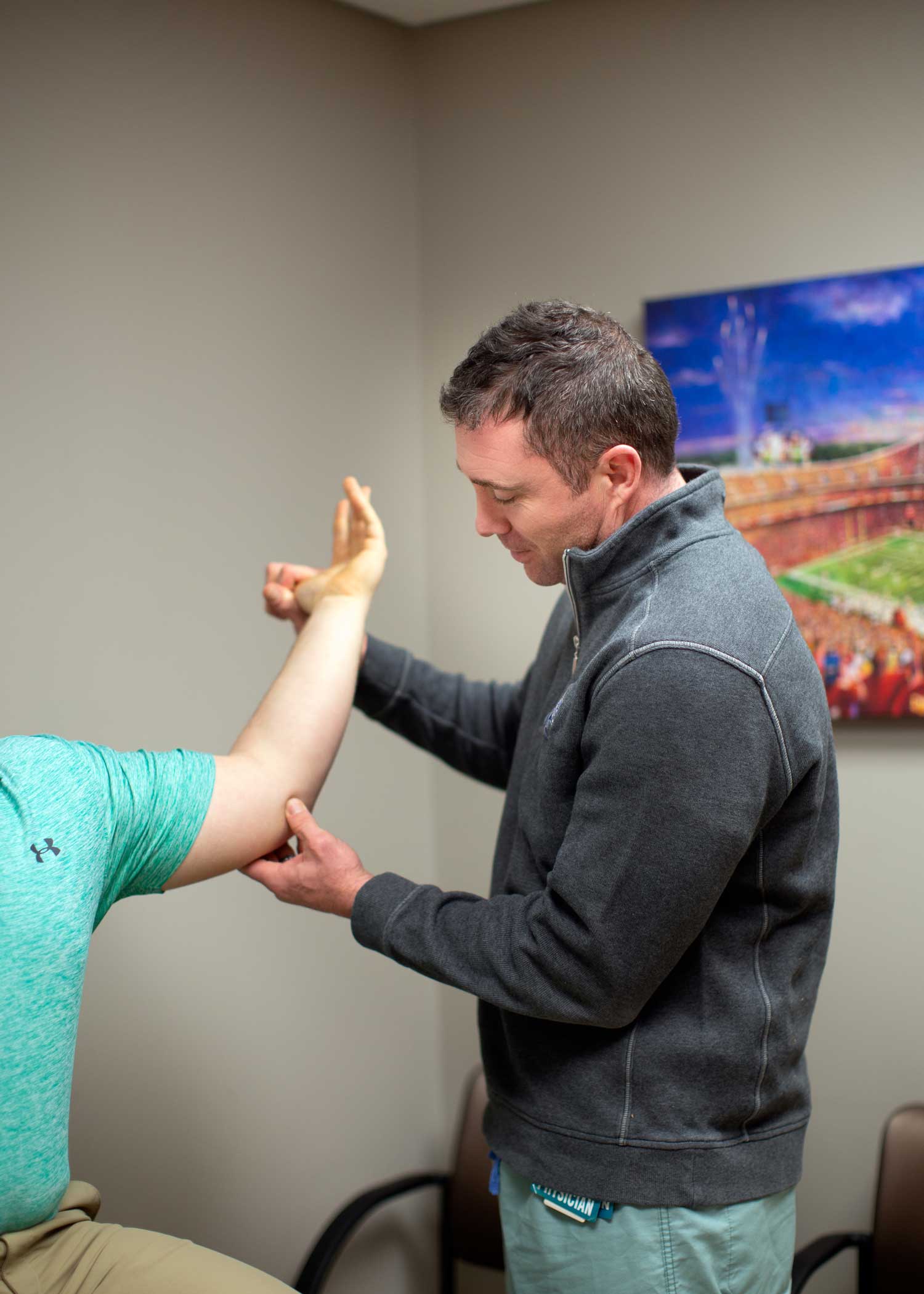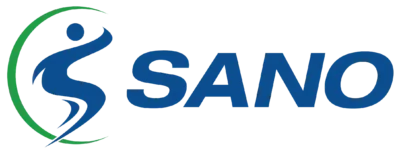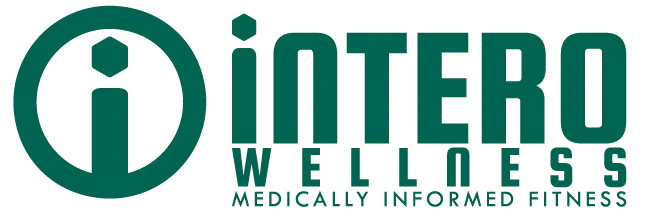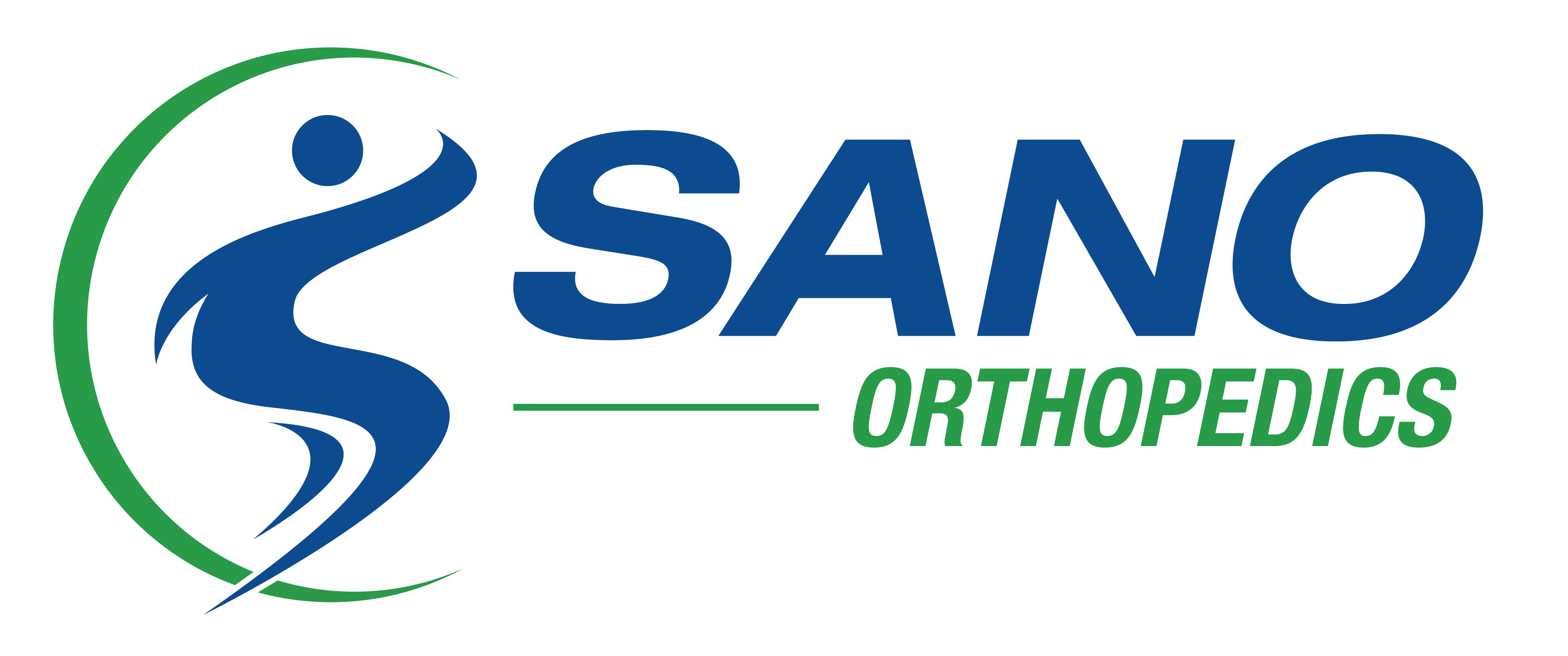WHAT IS TENNIS ELBOW?
Tennis Elbow, or lateral epicondylitis, is inflammation or, in some cases, degeneration or partial tearing of the tendons that join the forearm muscles outside the elbow. This is a painful condition caused by overuse.
The tendon usually involved in tennis elbow is called the Extensor Carpi Radialis Brevis (ECRB). CRB is weakened from overuse, microscopic tears form in the tendon where it attaches to the lateral epicondyle. This leads to inflammation and pain.
WHAT CAUSES TENNIS ELBOW?
Playing tennis or other racquet sports can cause this condition, but non-athletes can also get tennis elbow, too. Recreational activities that require repetitive and vigorous use of the forearm muscle or repetitive extension of the wrist and hand. This includes painters, plumbers, chefs and carpenters.

WHAT ARE SYMPTOMS OF TENNIS ELBOW?
Symptoms appear gradually and can worsen over weeks or months before patients seek treatment.
Common signs and symptoms of tennis elbow include:
- Pain or burning on the outer part of your elbow
- Weak grip strength
- Sometimes, pain at night
HOW IS TENNIS ELBOW TREATED?
For most, non-surgical, conservative approaches will heal lateral epicondylitis.
- Resting. Avoiding any activity that causes pain to the sore elbow.
- Medication. Using non-steroidal anti-inflammatory drugs (NSAIDS) such as ibuprofen or Motrin.
- Physical therapy. Specific exercises help strengthen the muscles of the forearm.
- Regenerative medicine. In PRP therapy, the healing platelets from your blood are extracted and then re-injected into the injured elbow.
- Bracing. Use of a counter-force brace such as a tennis elbow strap on the forearm for forceful activities.
WHY MORE PATIENTS ARE USING PRP TO TREAT TENNIS ELBOW
PRP is when we take blood from the patient, and spin it in a centrifuge to separate the different elements within the blood. The platelets are then injected into the injured area. PRP therapy intends to boost the healing process through the injection of platelets (and their healing factors) from one’s own blood into the site – which kicks off a significant inflammatory response.
The use of PRP as a treatment option for tennis elbow is gaining interest, although it does depend on the patient and injury. Since PRP is not yet approved as a treatment option, insurance do not cover this treatment. It is acknowledged that PRP is a promising and safe treatment modality for tennis elbow pain, with few side effects and good outcomes. Learn more about PRP.








